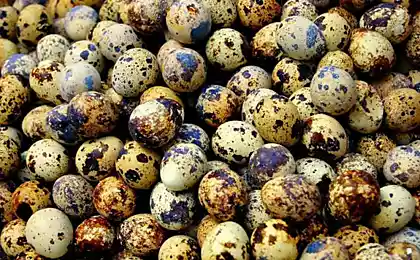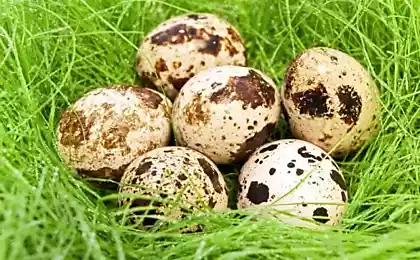1548
Insect eggs (18 photos)
Collection of macro fotograyi eggs (larvae of the future, not what you think) insects.
1. Egg unknown insect. © Picture Esk
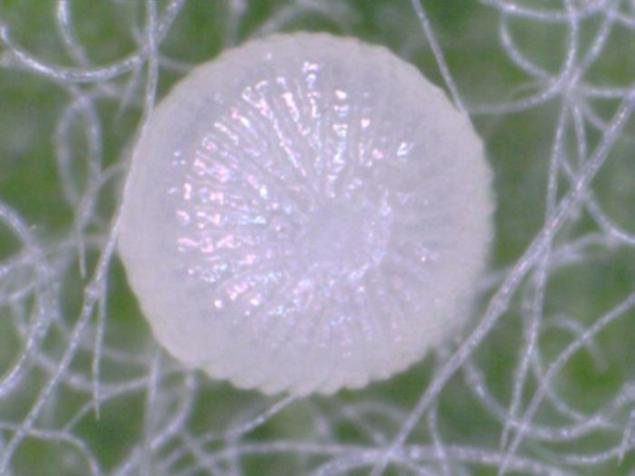
Insects tend to lay their eggs into the environment, but sometimes they hatch into larvae from back in the abdomen of the female, and there appear to light "living».
2. Eggs moths. © johnhallmen
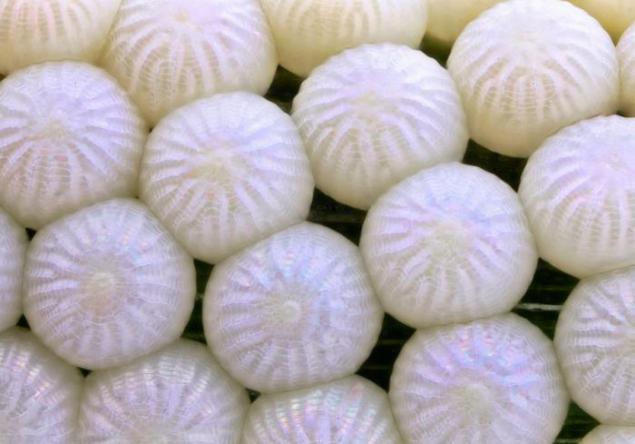
For insects have relatively large, yolk-rich eggs.
3. Eggs unknown insect. © shantaya ~ dannie
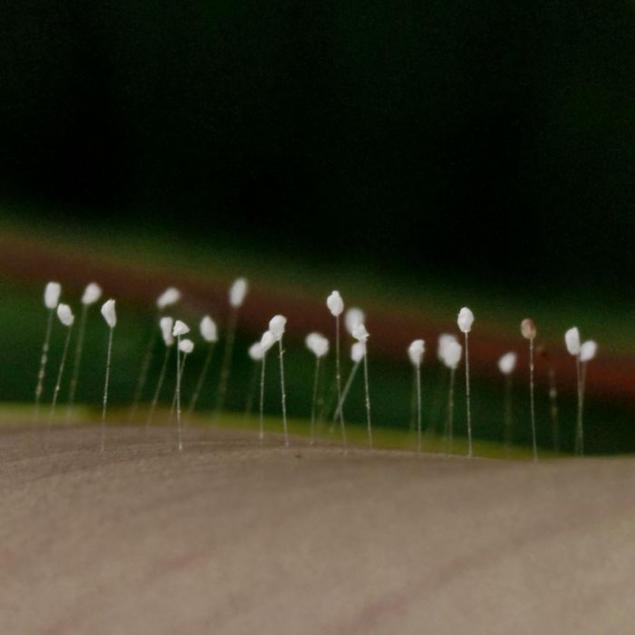
4. © Gustavo Mazzarollo
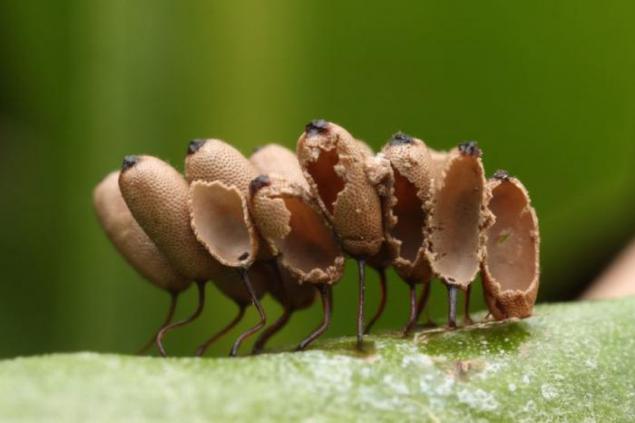
Developing in the cavity under pressure ovarioles its walls, a few eggs are extended in length, so round in the initial state insect eggs are replaced by elliptical.
5. Eggs kileviki. © linden.g
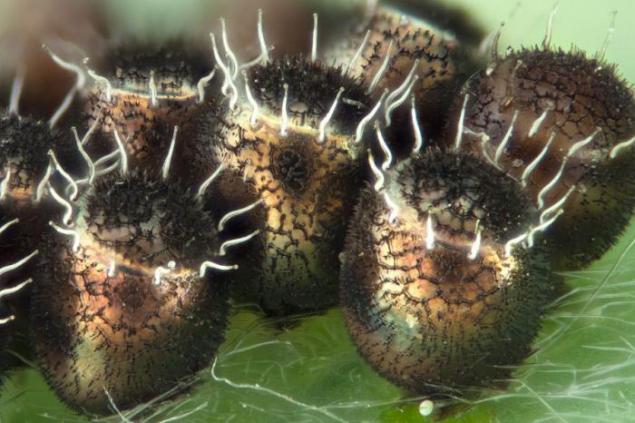
Butterflies and some bugs eggs are the second round.
6. Eggs stink bug. © Nikonian72
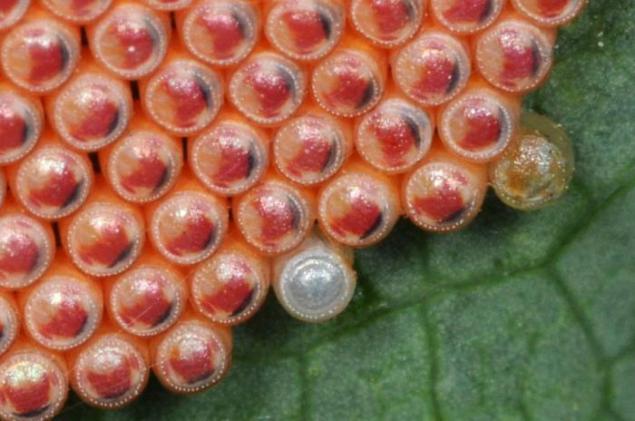
Insect eggs vary in shape and size. The largest of them reach 15 mm in length, and the smallest does not exceed 0, 05 mm. Sizes range from 1, 35 to 70% of the length of the female body.
7. Eggs that delayed bug-rombovik sad. © Martin LaBar

Termites lick the egg through the shell of the eggs penetrate the nutrients contained in the saliva and egg in the process of development is increased by 3-4 times.
8. The caterpillar hatches from an egg. © «Paul J»
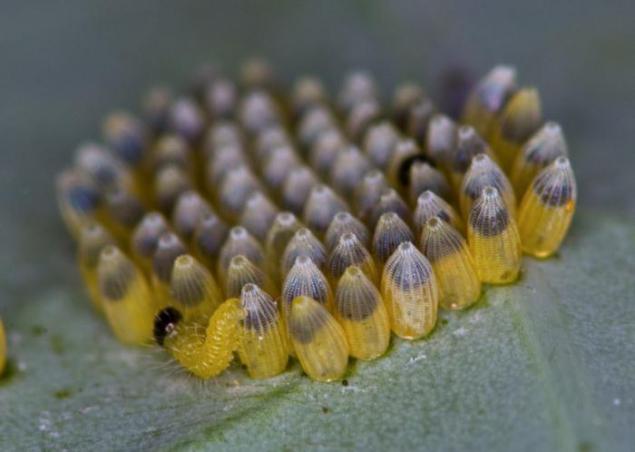
The development of the insect in the egg stage can last from a few days (many flies) up to 2-3 weeks.
9. © Dean Vuksanovic
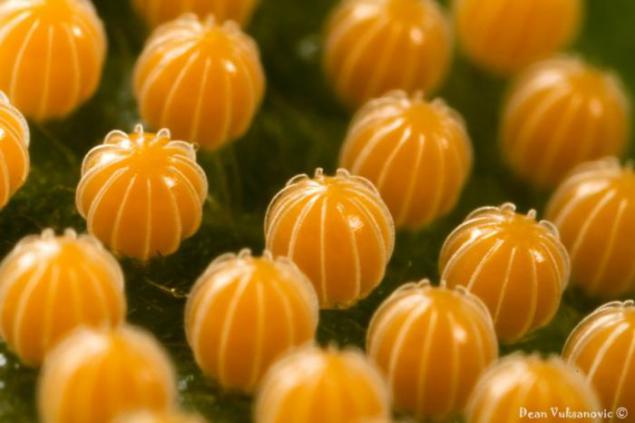
In insects lay eggs in the fall, the duration of phase egg can reach 6-9 months.
10. © toughkidcst
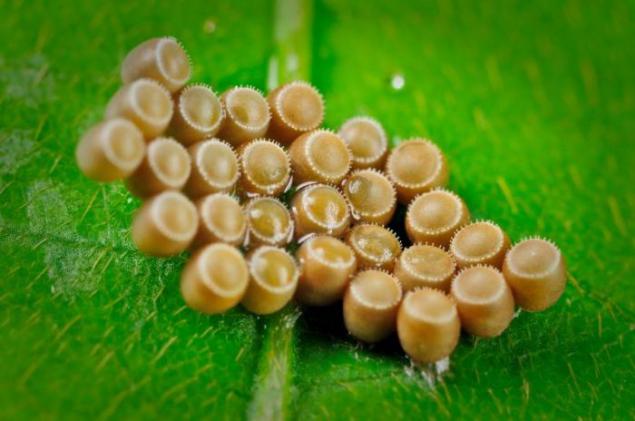
Thanks polyembryony each egg develops some riders a large number of larvae.
11. Eggs hischnetsy. © Gustavo Mazzarollo
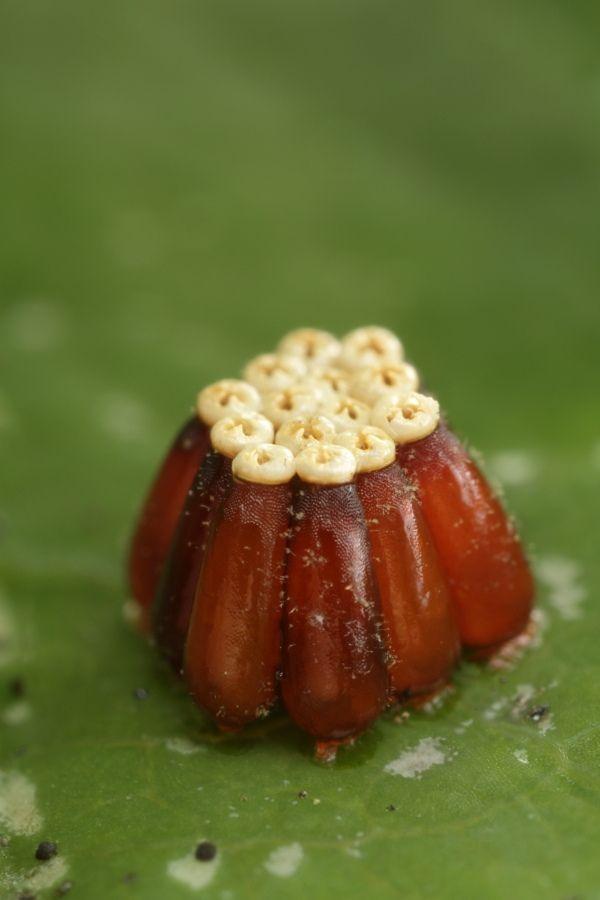
Shell eggs of insects called the chorion, it consists of two layers, penetrated a system of pneumatic cavities. Occasionally a chorion deposited layer of wax and additional cuticles
12. Eggs stink bug. © Lord V
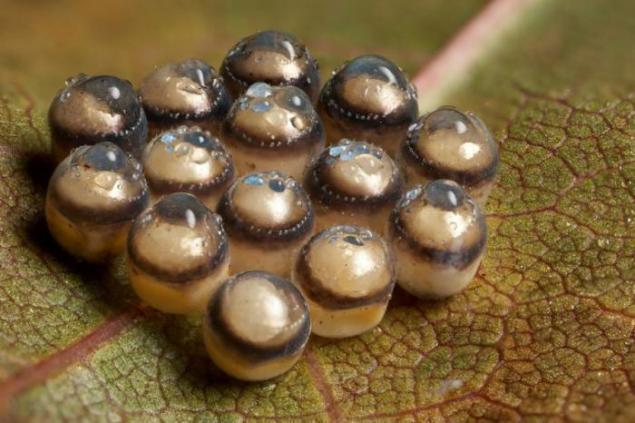
13. Eggs zolotoglazki. © vega *
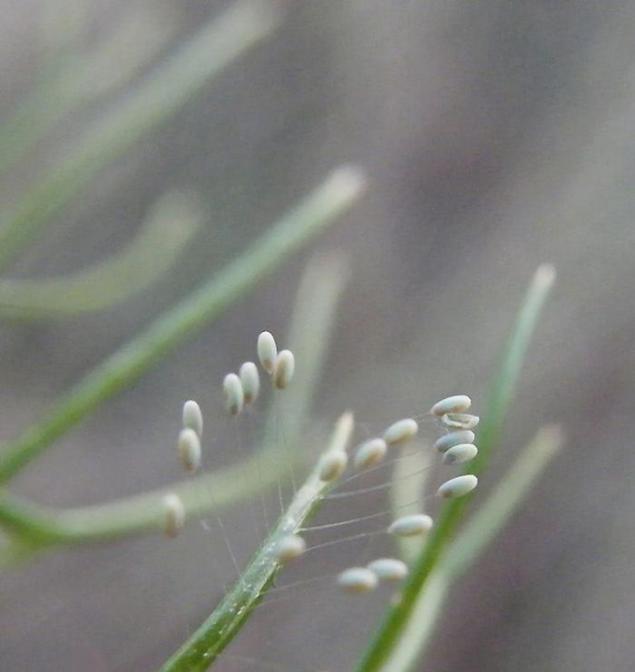
14. Eggs unknown insect on a leaf gladiolus. © Martin Barrett

The eggs of many insects are well protected against moisture loss.
15. Eggs bug family Asopinae. © myriorama

Dung flies lay eggs in the dung of animals and provide them with the breathing tube protruding above the surface of the litter, and provides the embryo with fresh air.
16. Eggs oak lasiocampidae. © Joaquim F. P.
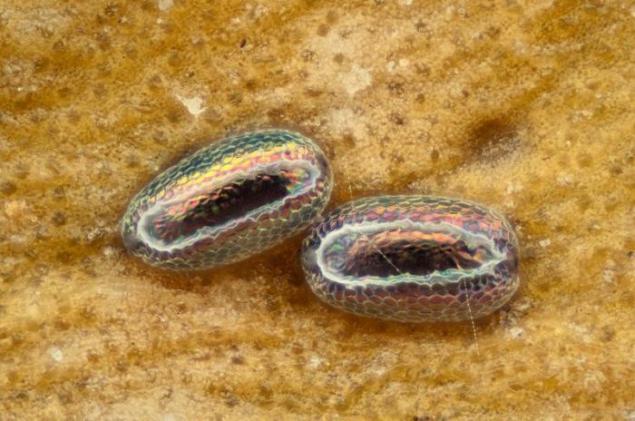
17. Egg Belyanko Repnoe or butterfly Pieris rapae. © Joaquim F. P.
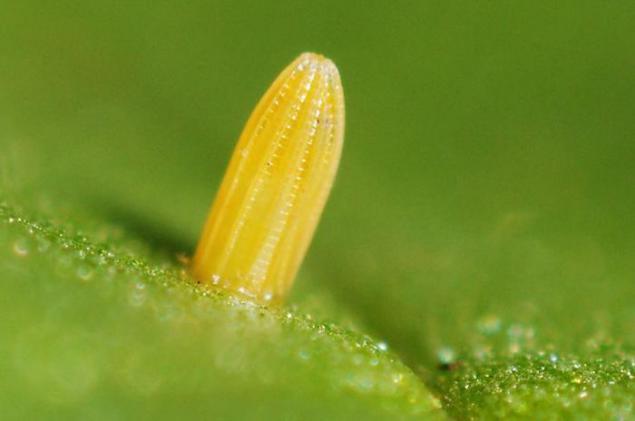
Goldeneye, on the contrary, lay their eggs on the long thin legs to protect against arthropod predators eggs.
18. The small bugs will soon be born. © myriorama
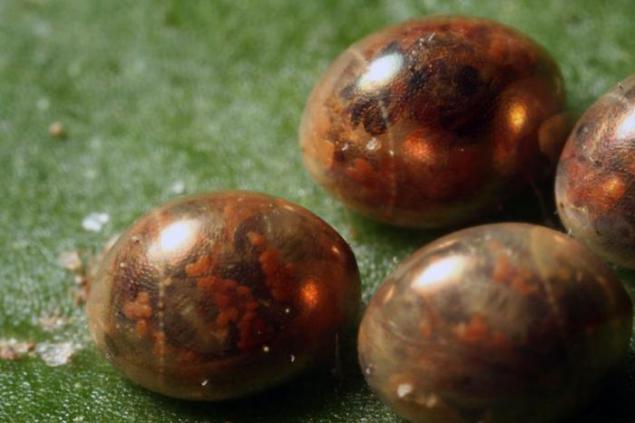
1. Egg unknown insect. © Picture Esk

Insects tend to lay their eggs into the environment, but sometimes they hatch into larvae from back in the abdomen of the female, and there appear to light "living».
2. Eggs moths. © johnhallmen

For insects have relatively large, yolk-rich eggs.
3. Eggs unknown insect. © shantaya ~ dannie

4. © Gustavo Mazzarollo

Developing in the cavity under pressure ovarioles its walls, a few eggs are extended in length, so round in the initial state insect eggs are replaced by elliptical.
5. Eggs kileviki. © linden.g

Butterflies and some bugs eggs are the second round.
6. Eggs stink bug. © Nikonian72

Insect eggs vary in shape and size. The largest of them reach 15 mm in length, and the smallest does not exceed 0, 05 mm. Sizes range from 1, 35 to 70% of the length of the female body.
7. Eggs that delayed bug-rombovik sad. © Martin LaBar

Termites lick the egg through the shell of the eggs penetrate the nutrients contained in the saliva and egg in the process of development is increased by 3-4 times.
8. The caterpillar hatches from an egg. © «Paul J»

The development of the insect in the egg stage can last from a few days (many flies) up to 2-3 weeks.
9. © Dean Vuksanovic

In insects lay eggs in the fall, the duration of phase egg can reach 6-9 months.
10. © toughkidcst

Thanks polyembryony each egg develops some riders a large number of larvae.
11. Eggs hischnetsy. © Gustavo Mazzarollo

Shell eggs of insects called the chorion, it consists of two layers, penetrated a system of pneumatic cavities. Occasionally a chorion deposited layer of wax and additional cuticles
12. Eggs stink bug. © Lord V

13. Eggs zolotoglazki. © vega *

14. Eggs unknown insect on a leaf gladiolus. © Martin Barrett

The eggs of many insects are well protected against moisture loss.
15. Eggs bug family Asopinae. © myriorama

Dung flies lay eggs in the dung of animals and provide them with the breathing tube protruding above the surface of the litter, and provides the embryo with fresh air.
16. Eggs oak lasiocampidae. © Joaquim F. P.

17. Egg Belyanko Repnoe or butterfly Pieris rapae. © Joaquim F. P.

Goldeneye, on the contrary, lay their eggs on the long thin legs to protect against arthropod predators eggs.
18. The small bugs will soon be born. © myriorama





